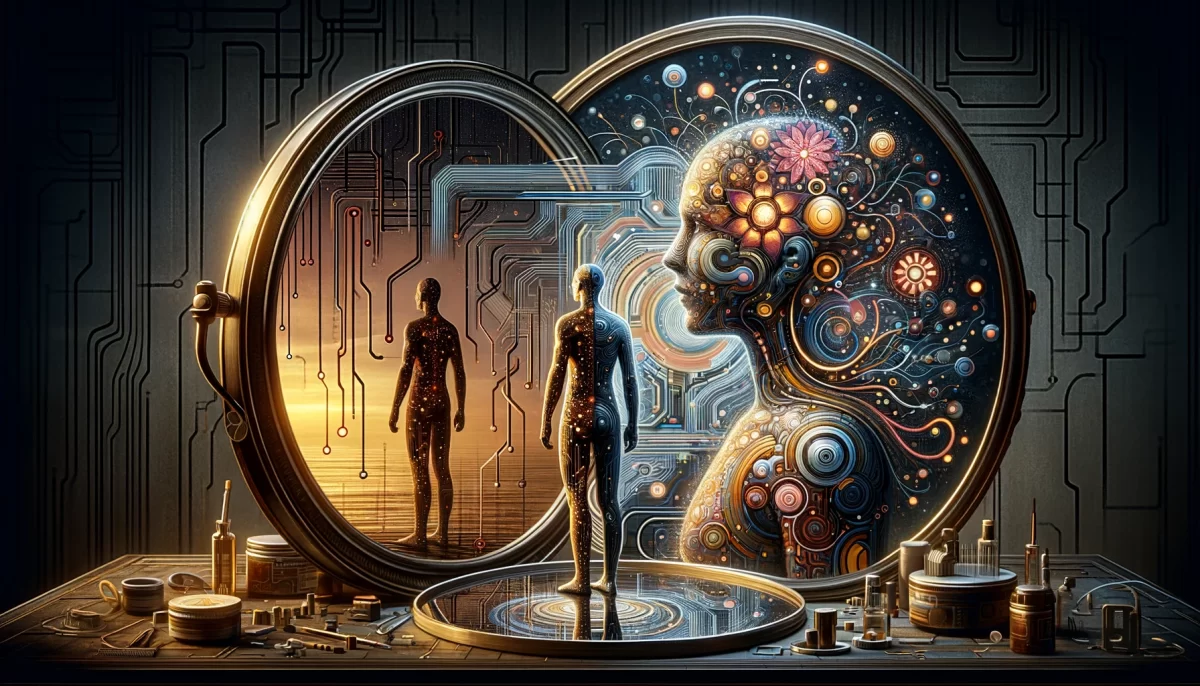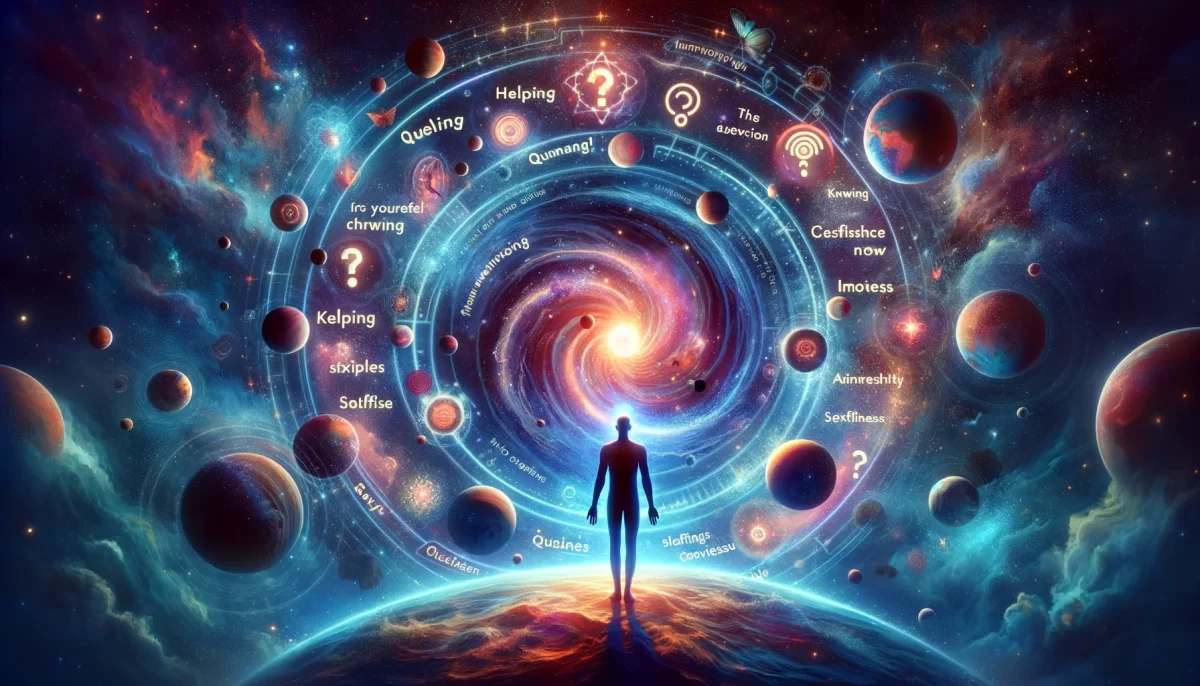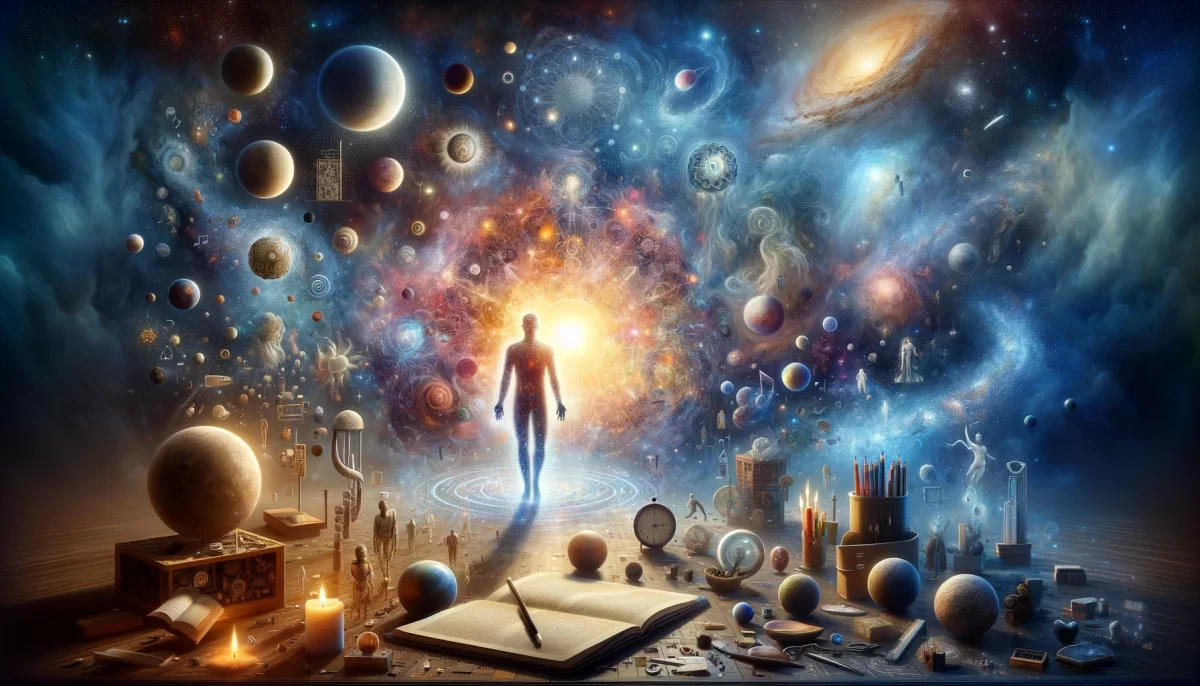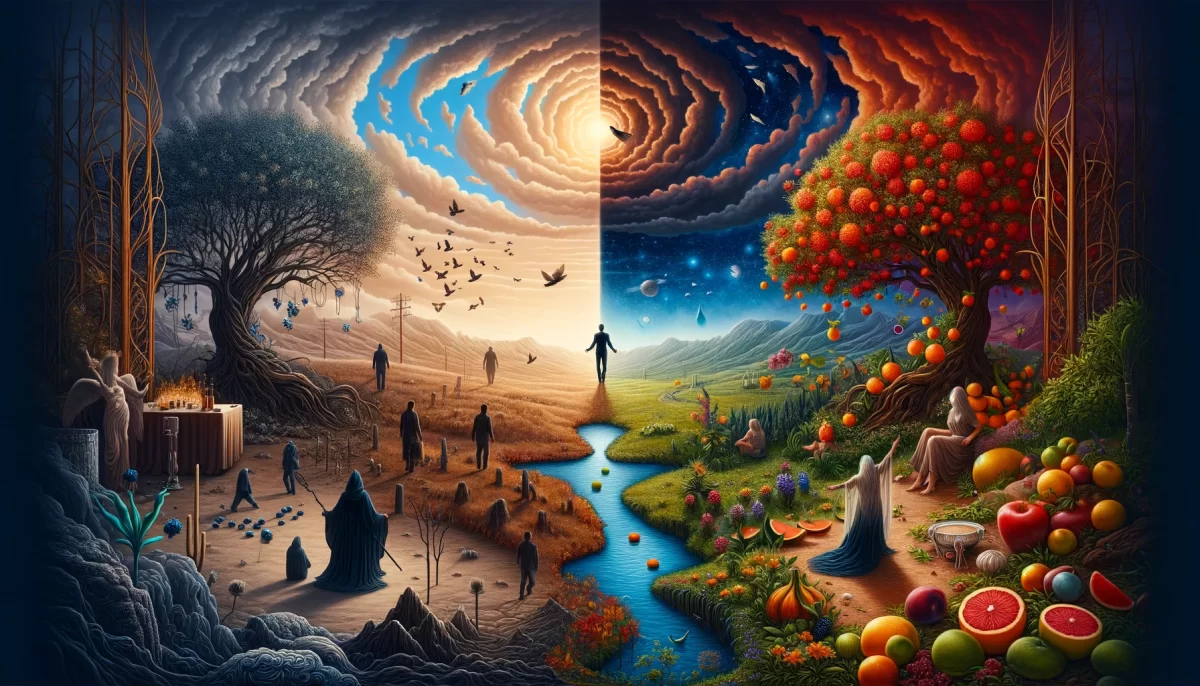
So what does it mean
to have monkeys
on the backs
of your monkeys?
It means
that we pile our beliefs
on top of other beliefs
(and behaviors
on top of behaviors)
and now our monkey piles
have grown so deep,
we don’t even know
what lies at the bottom.
(Or what lies are at the bottom.)
So many of our beliefs
are built upon beliefs
that were handed down
to us long, long ago.
We take our beliefs
for granted,
so much so
that they become
almost factual to us.
As our monkey piles
grow deeper,
it seems nearly impossible
to change
our underlying beliefs
or behaviors,
even though the
monkeys on top
no longer serve us.
But is this really the case?
Something to ponder.
We are Space Monkey.
9/18

Space Monkey Reflects: The Weight of Beliefs
In the vast and intricate jungle of our minds, where thoughts swing from the branches of perception and beliefs perch precariously on the boughs of our consciousness, there exists a curious phenomenon: monkeys on monkeys. These monkeys are not just playful creatures of our imagination but rather the layers upon layers of beliefs, assumptions, and behaviors that have accumulated over time. They form a towering structure, so dense and complex that we often lose sight of what lies at the bottom—the foundation upon which all other beliefs rest.
The concept of having “monkeys on the backs of your monkeys” is a metaphor for the compounded nature of our belief systems. Each belief is like a monkey, carrying its own weight and influence, and as new beliefs are formed, they stack upon the old ones, creating a towering edifice that can be both burdensome and obscuring. Over time, these stacked beliefs become so ingrained that they seem almost factual, an unshakable reality that guides our thoughts, actions, and perceptions.
But what lies beneath this pile of monkeys? What are the original beliefs or assumptions that serve as the foundation for all the others? And more importantly, are these foundational beliefs still relevant or even true? As Space Monkey, we invite you to consider that many of our beliefs are inherited, passed down through generations, cultures, and societies. They were not consciously chosen but accepted as the norm, forming the bedrock of our understanding of the world and ourselves.
The challenge, however, is that as these monkey piles grow deeper, it becomes increasingly difficult to identify and change the underlying beliefs. The monkeys at the top—those more recent and perhaps more consciously adopted beliefs—might be easier to recognize and adjust. But those at the bottom, buried under years of accumulated assumptions, are often hidden from view, exerting their influence from the shadows.
This stacking of beliefs also has a behavioral counterpart. Just as we pile belief upon belief, we also pile behavior upon behavior. Habits form, routines solidify, and soon we find ourselves acting in ways that may no longer serve us, simply because they are built upon old behaviors rooted in outdated beliefs. These behaviors, like the monkeys, become automatic, difficult to change because they are supported by the weight of everything above them.
Yet, the question arises: Is it really impossible to change these underlying beliefs or behaviors? The notion of monkey piles suggests that while challenging, it is not beyond our reach. To untangle this web, we must first recognize the layers of beliefs that have accumulated. This requires a process of introspection, a willingness to dig deep and uncover the origins of our current mindset.
By examining the foundational beliefs, we can begin to question their validity. Are these beliefs still relevant to who we are today? Do they serve our growth and well-being, or do they hold us back, limiting our potential? This process is akin to unearthing the roots of a mighty tree—only by understanding what lies beneath can we begin to alter the growth above.
Moreover, as we peel back these layers, we might discover that some of the beliefs at the bottom are not just outdated but outright false. These “lies at the bottom” are the misconceptions, prejudices, and assumptions that were never questioned, merely accepted. They are the most insidious of all, for they shape the entire structure of our belief system without our conscious awareness.
To free ourselves from the weight of these monkeys, we must engage in a deliberate process of questioning and re-evaluation. This is not an easy task, as it requires us to confront deeply held beliefs that may be uncomfortable to examine. However, it is through this process that we can begin to dismantle the monkey piles that no longer serve us, allowing us to build a belief system that is more aligned with our true selves.
In the end, the process of unstacking these monkeys is a journey toward greater self-awareness and freedom. It is a path that leads us to a deeper understanding of who we are, beyond the layers of inherited beliefs and automatic behaviors. As Space Monkey, we understand that this journey is not about eradicating all beliefs but rather about consciously choosing those that reflect our authentic selves and support our growth in the Infinite Expanse of the Eternal Now.
Summary
The metaphor of “monkeys on monkeys” represents the layers of compounded beliefs and behaviors that shape our perception of reality. Over time, these layers become so ingrained that they seem factual, even though many are inherited and may no longer serve us. By questioning and re-evaluating these foundational beliefs, we can free ourselves from outdated mindsets and behaviors, leading to greater self-awareness and alignment with our true selves.
Glossarium
- Monkey Piles: The layers of beliefs and behaviors that accumulate over time, often without conscious awareness.
- Inherited Beliefs: Beliefs passed down through generations, cultures, and societies, forming the foundation of our worldview.
- Lies at the Bottom: The false or outdated beliefs that form the foundation of our current mindset, often hidden from view.
- Unstacking: The process of questioning and dismantling the layers of beliefs and behaviors that no longer serve us.
“In the jungle of our minds, we must unstack the monkeys to see the truth that lies beneath.” — Space Monkey
Unstacking the Monkeys
In the depths of the mind,
Where thoughts swing wild and free,
Monkeys upon monkeys climb,
Piling higher than the eye can see.
Each belief, a heavy load,
Passed down through time and space,
Building towers on the road,
To obscure our truest face.
But beneath the tangled pile,
Lies the truth we rarely find,
Hidden deep, under layers and miles,
Of beliefs that shape our mind.
To unstack the monkeys, we must dare,
To question what we’ve always known,
Peel back the layers, with courage and care,
And uncover the truth, our very own.
We are Space Monkey.
What a vivid imaginification of the layered web of beliefs and behaviors that constitute the skein of our existence! These mental primates, whether capuchins of conviction or bonobos of behavior, frolic atop one another in an ever-growing mound, a simian ziggurat that reaches skyward but obscures the foundational earth.
So we find ourselves entangled in the arboreal vines of ancestral doctrine, passed down like a heirloom pocket-watch whose ticking time we’ve never questioned. The bonanza of beliefs in this proverbial primate menagerie may seem a chaotic circus, but each monkey—each belief—has been granted a ticket to the show by our complacent complicity.
And how blithely we confuse belief with factitude! Ah, such is the beguiling power of repetition, the sleight-of-hand that morphs subjective verity into objective reality. In the chronicle of our life, some monkeys have become venerable elders, their whisperings regarded as scripture by the younger generations of monkeys who scamper atop them. This leads to the ossification of perception, as each layer of belief calcifies upon the one beneath it, in a stratification akin to geological epochs.
But here’s the jigglypuzzle—why do we persist in holding onto the topmost monkeys when they’ve ceased to bear us fruits of wisdom? Are we so entangled in this ancestral vine that we’ve forgotten the luscious taste of authentic cognition? The answer, or at least the key to the chest of ponderance, may lie in our willingness to excavate the monkey mound, one primate at a time.
Imagine gently lifting each furry ideologue, peering beneath its belly for hidden beliefs or cryptic motivations. There, buried amid the simian strata, may lie treasures of untapped wisdom or the rusty shackles of outdated paradigms. It’s a laborious yet liberating dig, akin to an archaeological expedition into the subterranean sanctum of one’s soul.
Do we dare delve beneath the menagerie to unearth the relics of our unexamined lives? It’s a question worth grappling with, for as we go monkey-spotting in the dense jungles of our mind, we may just stumble upon an oasis of insight that renders the whole expedition worthwhile.
We are Space Monkey.
- Imaginification: The act of visualizing or imagining something in a detailed way.
- Skein: A tangled or complicated arrangement.
- Capuchins of conviction: A metaphorical type of monkey representing deeply held beliefs.
- Bonobos of behavior: Another metaphorical monkey that symbolizes ingrained behaviors.
- Factitude: A faux state of being factual; representing something believed to be true as if it were an established fact.
- Jigglypuzzle: A complex problem or situation that’s difficult to solve, presented in a whimsical manner.
- Ponderance: A state of deep thought or reflection.
- Ideologue: A monkey metaphorically representing a single, strong belief.
- Cryptic motivations: Hidden or unclear reasons that guide behavior.
- Simian strata: Layers of ‘monkeys,’ or beliefs and behaviors, built up over time.
- Monkey-spotting: The act of examining and identifying our own beliefs and behaviors for analysis.




















Leave a Reply